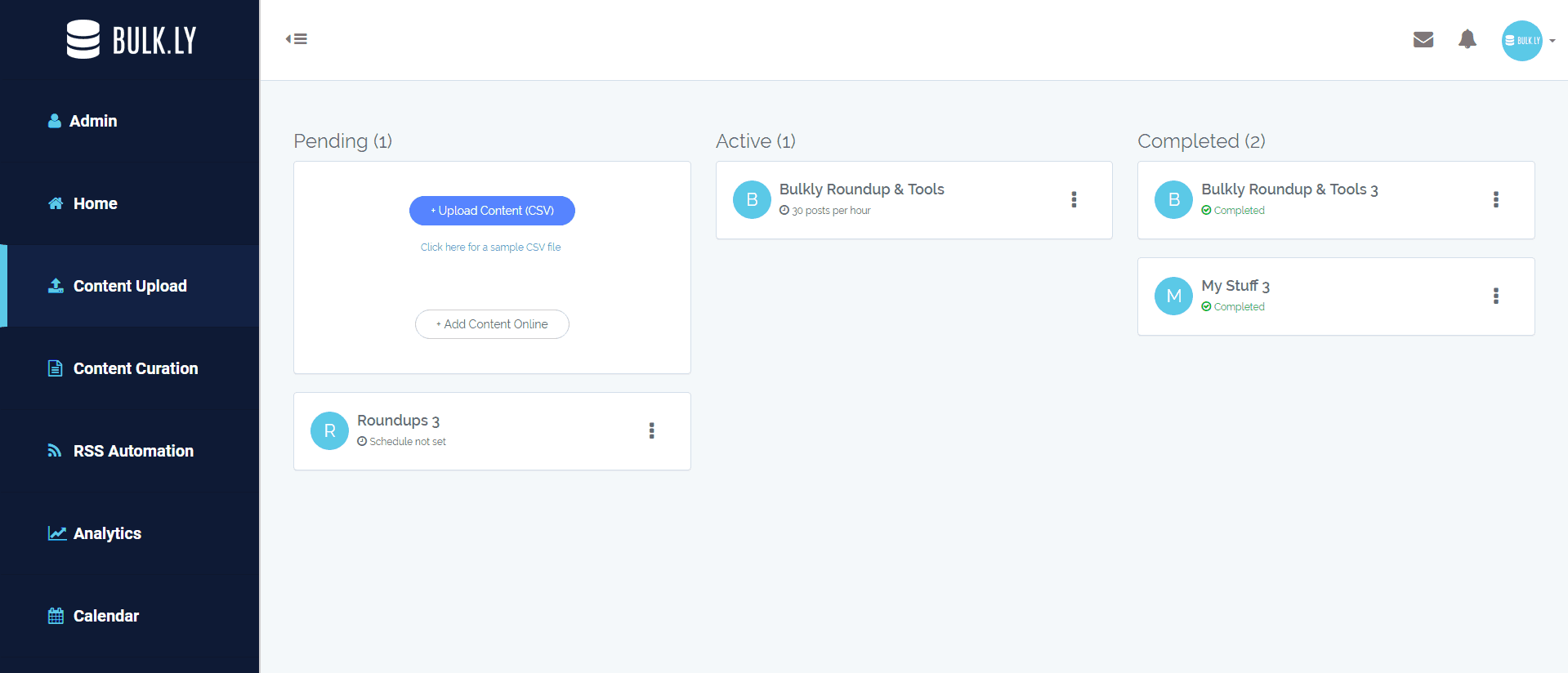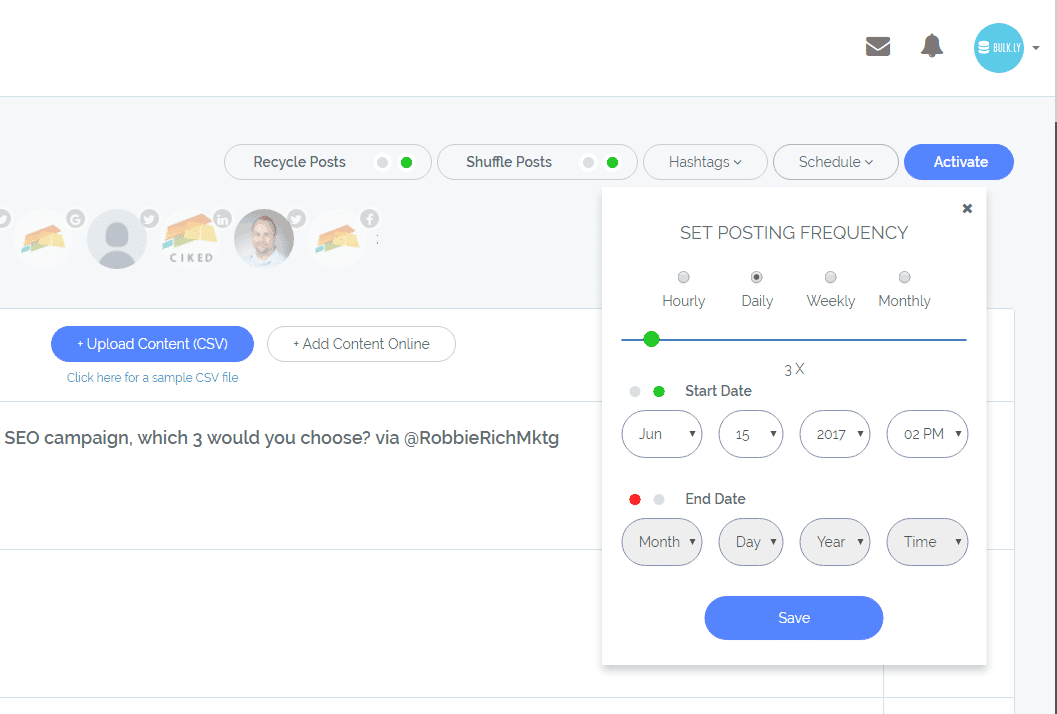I was recently posed an interesting question by one of my newsletter subscribers around their social media profiles after their death.
Here is what they asked:
[perfectpullquote align=”full” cite=”” link=”” color=”” class=”” size=””]The one thing I want to start seeing for my legacy online is a posthumous function for when I’m gone I would like to still automate my content and have it go out to the world even in the event of my death. I wonder how I can work with buffer to make something like this happen?[/perfectpullquote]
As a user of social media automation, my immediate thought was “Heck-ya, you can definitely do that with Buffer.” But there will be some limitations (with a solution) which I will get into.
Before we go any further, I’m going to do my best to not be part of the 98% mentioned in this clip:
[perfectpullquote align=”full” cite=”” link=”” color=”” class=”” size=””]98% of us will die at some point in our lives…[/perfectpullquote]
But in all seriousness, as morbid as it sounds – each day for each of us is closer to the end.
And when the end comes, no matter what you believe in, life for others will go on without you.
So let’s see how you can set up your social media profiles to post for you long after you have passed on.
Why Should Your Social Media Accounts Live On?
There might be many reasons someone wants to continue posting on social media post-death.
But let’s clear one thing up – this content will not be coming directly from your grave (or wherever your final place may be – unless there are significant advances in technology).
Instead, it will be either pre-populated updates or possibly the re-use of your evergreen social media content.
Perhaps your reasoning for continuously posting social media updates is to promote awareness for a cause. Maybe you have an illness that needs a cure or you feel strongly about certain social issues?
If your status updates typically cover these types of points, they can more than likely fall into the bucket of evergreen social updates and be used again and again.
Or maybe you have some sort of twisted humor in that you want people to think you are still around (even though you are not)?
Social media automation could help make it happen.
Another reason might be that you are kind of a big deal and want your ego living on in the social realm for eternity (last Will Ferrell reference – I promise).
Again, with social media automation it’s possible to post after your death (if you want to).
It’s a decision you might want to consider thinking about. Would you want your social media accounts to live on even after you are gone?
What You’ll Need to Do in Order to Post on Social Media After Death
No one knows when their time will be up (unless you are part of the 2% Ricky Bobby referred to earlier).
So, you’ll need to have a plan.
Not necessarily a will or anything (although it might not be a bad idea), but a queue of social media posts that won’t go out of style.
As I mentioned earlier, this approach will work best for social media updates that are evergreen in nature. This is because these updates can be sent out at anytime and still be relevant to your audience.
If you don’t already have a bank of evergreen social updates, you’ll need to open up Excel and start writing them up. Ideally, you will want to craft updates that make sense while you are alive so that you can start cycling them through the queue.
What Should You Post on Social Media After Death?
There can be a variety of things you would like to live on in social media eternity. But, you still need to find posts that are relevant today.
A good example of this is inspirational quotes.
- They are timeless
- Have great engagement (not that it means much once you are gone)
Perhaps you have written some content that is evergreen? Content that will still have value years after your passing.
I mentioned it earlier, but maybe you are suffering from something that you want to build awareness around. You could create evergreen social media posts about building awareness. Some examples are:
- Periodically reminding your audience the importance of getting tested regularly
- Mentioning warning signs that someone might be going through what you are and what to do about it
- Using RSS feeds of sources or organizations that discuss the topic regularly to populate social media updates
Another option (which can quite a bit creepy I must say) is to post about life events. For example,
- Wish someone happy birthday every year
- Tell your significant other happy anniversary each year
- Remind someone of a special event (Hawaii trip, get together, etc) that happened on a particular date each year
Again, as long as the posts are evergreen in nature there shouldn’t be any issues.
How To Post on Social Media Once You Have Passed Away
Once you have decided what you would like to post on social media, you will need to figure out how to do it.
So how can you post on social media once you have passed away?
Through social media automation.
But first you will need to have a few things setup (or taken care of on your behalf).
1. A Queue of Social Media Posts
Before you go any further you will need to have your bank of social media posts you wish to continue posting after you have kicked the bucket. Ideally, you will want to create these in a CSV/Excel file for easy uploading into one of the later steps.
Again, your social media updates should be evergreen in nature so that you can use them again and again while you are both living and after you are gone. The reason you want to go ahead and start using them is so that you can have them mixed into your current social content that gets posted. Using the method I am going to outline will really only work if you set it up while you are living 🙂
2. Have an Active Buffer Account
We’ll use Buffer to post the content to you social media accounts. If you are not familiar with Buffer, they are one of the largest social media automation tools that can post to your social media accounts on your behalf.
Buffer offers both a free and paid account.
You could probably use a free account if you don’t have someone lined up to make payments on your behalf after you are gone – you will just need to be familiar with any limitations the free account may come with.
Make sure you have connected the social media profiles you want to have posts sent to in addition to the schedule you would like each account to post on.
3. Use a Social Media Content Recycling Tool
Now, you might be wondering how in the world are you going to keep sending your posts to your social media accounts?
If you have used Buffer before, you are probably aware that you have to manually add your content to your queue.
So why would I recommend using Buffer to post if you are not going to be around to add content to it?
Because we are going to use another tool that will automatically add content to your Buffer account for you – Bulkly.
Bulkly connects to your Buffer account and allows you to create a never-ending queue of social media updates, it is truly a set and forget approach.
Similar to Buffer, Bulkly has both free and paid accounts.
Should you choose to use a free account, just be aware of the limitations your account might have. And if you are using an upgraded/paid account, just be sure you have arrangements for payments to be made on your behalf should you not be able to make payments.
If you have already created your file of content you want to share, you can have your Bulkly account set up in minutes. Even if you don’t have content ready, you can manually create it online.
Once you are logged into Bulkly, click on the “Content Upload”. You will be presented with two options.
- Upload Content (CSV)
- Add Content Online
If you are using a CSV to upload, just be sure to follow the template format – otherwise you can click “Add Content Online” to manually create your updates.
Once you are ready to upload your CSV of social media updates to Bulkly, click on the “Upload Content (CSV)” link and locate your file to upload.
Within a few seconds, your updates should show on Bulkly.
Next, you will have the option to make any edits to the text.
Above your updates, you will be presented a few options on how Bulkly should handle your posts.
The “Recycle Posts” option will need to be enabled. This will ensure that your posts get sent again and again. “Shuffle Posts” will mix up the order of the posts sent to Buffer. You can also create hashtags to be added to all of these updates – specific to each social media channel. Next, you will want to set the schedule for sending updates to Buffer.
The last thing you will need to do is to choose what connected social accounts you want these updates sent to. You can select one, some, or all. It’s up to you.
Once your settings are in place, simply click the “Activate” button and Bulkly will take care of the rest.
Things to Consider When Posting in Your After-life
As with life, nothing is guaranteed. Same goes with using this method to set up your social profile post-mortem.
The first potential pitfall is that do you really know how long these social media sites will be around? For example, remember when Myspace was a big deal? How many people put all their eggs in that basket only to lose out when Facebook came along?
Or what could be the next up and coming social network ends up flaking out (I’m looking at you Google+)?
The next thing to consider is the tool(s) you use to post these updates no longer working years down the road. While just about all services created are with the intent to be around forever, things happen and they no longer work.
But even if sites that allow you to schedule posts still exist after you are long-gone, you will need to have payments setup to fund the use of some services if the free accounts don’t offer everything you need.
Have You Ever Thought About Your Social Media Profiles After Your Death?
I can say that before I was asked this question, I never really considered it. I mean, I hope I am part of the 2% that don’t die as mentioned by Ricky Bobby.
But, I know that isn’t the case. Everyone will have their time. Hopefully all of us have a long way to go.
I am still undecided if it is something I should look into doing?
What are your thoughts?
Are you interested in keeping your social media profiles alive after you are gone?
Be sure to let me know in the comments below.



